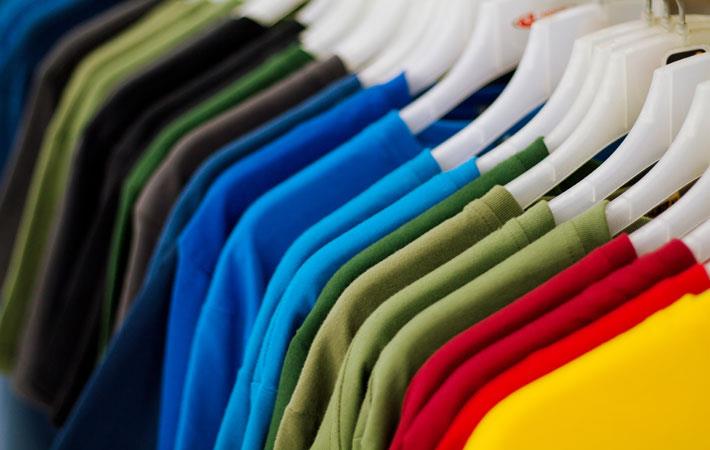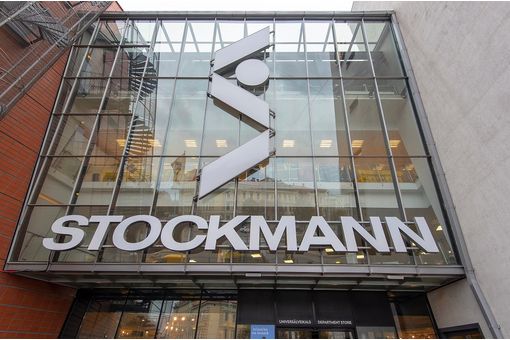Interviews
Threats can slow down pace of Indian apparel exports: ICRA
28 Sep '19
4 min read

Pic: Shutterstock
India’s apparel exports have revived this fiscal, growing by 4 per cent year-on-year (YoY) during April to July after two consecutive fiscals of de-growth by 3-4 per cent per annum, according ICRA. Though exports are likely to be in the positive zone during the rest of the fiscal, multiple looming threats can slow down the pace and make it challenging.
“External environment for India’s apparel exporters remains challenging amid a pick-up in activity on several free trade agreements among the key trading nations, which has intensified competition from nations having a cost advantage over India,” Jayanta Roy, senior vice president and group head, corporate sector ratings, ICRA, says.
In terms of region-wise trends, the growth in India’s apparel exports during the first four months of the current fiscal was primarily driven by a nearly 7 per cent YoY increase in exports to the US market, while exports to the key European and UK markets declined by 2-3 per cent YoY during the period, the credit rating agency said.
In addition to a general slowdown in the European Union’s (EU) import demand amid weakening of currency, India’s position in the EU market has been adversely affected by the preferred access to key competing nations like Bangladesh and Vietnam by way of free trade agreements.
These FTAs could make it increasingly more difficult for India’s apparel exporters to maintain their competitiveness in its largest market, the EU, which accounts for nearly 35 per cent of India’s apparel exports.
“Apart from challenges in the EU market, retail trends in the US also remain unencouraging, which could exert additional pressure on the order flow for India’s apparel exporters going forward.” adds Roy.
Retail sales of clothing and clothing accessories in the US have remained flat during 8M CY2019 vis-a-vis the corresponding period last year, following a comfortable growth of around 4.6 per cent during calendar year 2018. Besides affecting order flow, this could potentially result in renegotiation of realisations as well as elongated receivable cycle for the exporters.
The impact could be cushioned somewhat if India is able to capitalize on the likely opportunity, which may arise from imposition of additional tariffs on apparel exports from China to the United States. However, contrary to the expectations of a decline in China’s apparel exports to the United States amidst ongoing US-China trade tensions, these have instead grown at a steady pace.
This could be partly explained by a possible advancement of shipments in anticipation of higher tariffs. Further, there are exit barriers for large buyers in the United States in terms of compliance requirements as well as establishing a reliable supplier base for large quantities, which would have also prevented a sudden decline.
Although large exporters from India are well positioned to benefit from the market opportunity, it would require companies to scale up their operations, maintain strict delivery schedules and meet stringent compliance requirements of the buyers in a short span of time.
This apart, steps taken by the Indian Government to provide clarity on continued access to export incentives will play a crucial role in determining the ability of the Indian apparel exporters to garner a larger pie of the global apparel trade.
Given the headwinds, ICRA expects Indian apparel exporters to grow at a slower pace in the near term. However, despite moderation from a healthy 14-16 per cent growth in fiscal 2018-19 and the first quarter of 2019-20, pace of growth for the larger Indian apparel exporters is expected to remain comfortable at 8-10 per cent during this fiscal.
Renegotiation of apparel realisations by key buyers amid a slowdown in retail demand and continued competitive pressures from peer nations, together with high raw material costs and higher air freight charges are likely to put a pressure on margins.
The impact though, is expected to be cushioned by the transitory increase in export incentives till December 2019, because of regulatory changes. As a result, large exporters may report range-bound operating margins vis-a-vis last year.
As for capitalisation and coverage metrics, a slight correction is likely owing to higher working capital requirements amid elongated receivable turnover period. Nevertheless, these are expected to remain comfortable. Smaller companies in the sector, with limited bargaining power and dependence on smaller US retailers that are facing performance pressures, are more prone to the slowdown.
These companies may face pressures on profitability as well as liquidity, amid renegotiation of prices and payment terms. However, as a large proportion of such entities already have weak credit profiles and fall in the non-investment grade categories, no major rating movements are expected in the sector, ICRA added.
“External environment for India’s apparel exporters remains challenging amid a pick-up in activity on several free trade agreements among the key trading nations, which has intensified competition from nations having a cost advantage over India,” Jayanta Roy, senior vice president and group head, corporate sector ratings, ICRA, says.
In terms of region-wise trends, the growth in India’s apparel exports during the first four months of the current fiscal was primarily driven by a nearly 7 per cent YoY increase in exports to the US market, while exports to the key European and UK markets declined by 2-3 per cent YoY during the period, the credit rating agency said.
In addition to a general slowdown in the European Union’s (EU) import demand amid weakening of currency, India’s position in the EU market has been adversely affected by the preferred access to key competing nations like Bangladesh and Vietnam by way of free trade agreements.
These FTAs could make it increasingly more difficult for India’s apparel exporters to maintain their competitiveness in its largest market, the EU, which accounts for nearly 35 per cent of India’s apparel exports.
“Apart from challenges in the EU market, retail trends in the US also remain unencouraging, which could exert additional pressure on the order flow for India’s apparel exporters going forward.” adds Roy.
Retail sales of clothing and clothing accessories in the US have remained flat during 8M CY2019 vis-a-vis the corresponding period last year, following a comfortable growth of around 4.6 per cent during calendar year 2018. Besides affecting order flow, this could potentially result in renegotiation of realisations as well as elongated receivable cycle for the exporters.
The impact could be cushioned somewhat if India is able to capitalize on the likely opportunity, which may arise from imposition of additional tariffs on apparel exports from China to the United States. However, contrary to the expectations of a decline in China’s apparel exports to the United States amidst ongoing US-China trade tensions, these have instead grown at a steady pace.
This could be partly explained by a possible advancement of shipments in anticipation of higher tariffs. Further, there are exit barriers for large buyers in the United States in terms of compliance requirements as well as establishing a reliable supplier base for large quantities, which would have also prevented a sudden decline.
Although large exporters from India are well positioned to benefit from the market opportunity, it would require companies to scale up their operations, maintain strict delivery schedules and meet stringent compliance requirements of the buyers in a short span of time.
This apart, steps taken by the Indian Government to provide clarity on continued access to export incentives will play a crucial role in determining the ability of the Indian apparel exporters to garner a larger pie of the global apparel trade.
Given the headwinds, ICRA expects Indian apparel exporters to grow at a slower pace in the near term. However, despite moderation from a healthy 14-16 per cent growth in fiscal 2018-19 and the first quarter of 2019-20, pace of growth for the larger Indian apparel exporters is expected to remain comfortable at 8-10 per cent during this fiscal.
Renegotiation of apparel realisations by key buyers amid a slowdown in retail demand and continued competitive pressures from peer nations, together with high raw material costs and higher air freight charges are likely to put a pressure on margins.
The impact though, is expected to be cushioned by the transitory increase in export incentives till December 2019, because of regulatory changes. As a result, large exporters may report range-bound operating margins vis-a-vis last year.
As for capitalisation and coverage metrics, a slight correction is likely owing to higher working capital requirements amid elongated receivable turnover period. Nevertheless, these are expected to remain comfortable. Smaller companies in the sector, with limited bargaining power and dependence on smaller US retailers that are facing performance pressures, are more prone to the slowdown.
These companies may face pressures on profitability as well as liquidity, amid renegotiation of prices and payment terms. However, as a large proportion of such entities already have weak credit profiles and fall in the non-investment grade categories, no major rating movements are expected in the sector, ICRA added.
Fibre2Fashion News Desk (DS)
Popular News
Leave your Comments
Editor’s Pick
































-Ltd..jpg?tr=w-120,h-60,c-at_max,cm-pad_resize,bg-ffffff)





.jpg?tr=w-120,h-60,c-at_max,cm-pad_resize,bg-ffffff)
.jpg?tr=w-120,h-60,c-at_max,cm-pad_resize,bg-ffffff)






